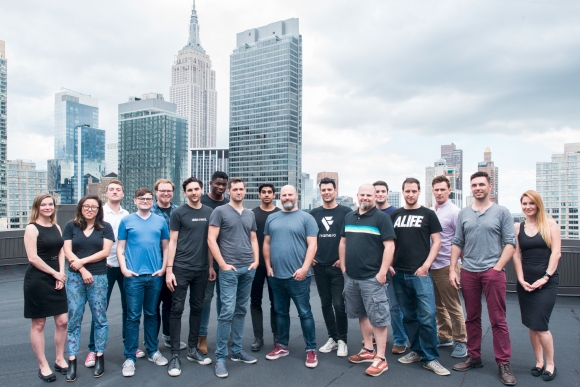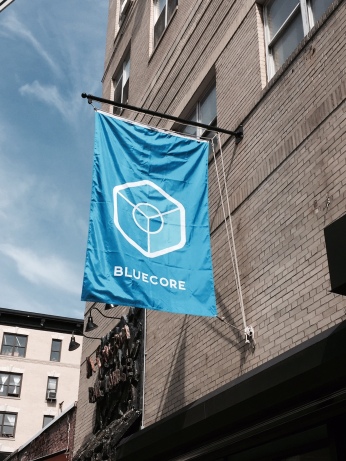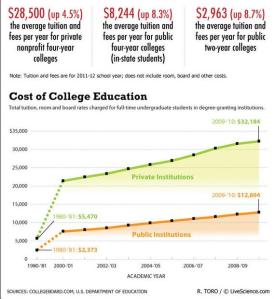One of the great things about our Community platform at FirstMark is that it has become an amazing resource for our entrepreneurs to turn to when they’re trying to solve a problem. Recently, a CEO at one of our companies reached out for guidance on handling sales tax obligations for SaaS in certain states, which quickly led many others to chime in for additional information. We quickly pulled together leading experts and had a full house session a few days later. It was a great example of how 8 years of deliberate stoking a community has turned into a powerful network, and I thought I’d share some insights from the session.
In spite of the fact that SaaS applications will generate $49 billion in revenues this year, there’s a lot of confusion and murky regulations to follow. If you haven’t put much effort into sorting through the sales tax issue, you’re not alone. Many companies’ first priority is to prove their market and scale their revenue, not to break ground on unsettled tax items. It’s not uncommon for companies to ignore the issue and elect to throw money at it should an audit arise. An understandable position, but turns out the earlier you can prepare for the issue, the better.
Below are a few notes that came out of our roundtable on how to begin tackling the issue. While every business is different, there seem to be a few basic starting points. [Obvious disclaimer: This is not advice and consult your tax professional].
Is SaaS Taxable? – One of the trickiest parts of sales tax on SaaS is the state-by-state inconsistency in requirements. Only a few states have specifically addressed SaaS in their tax code. In some cases, digital delivery is not taxed, while some states consider all packaged software subject to sales tax regardless of delivery method. Additional levels of consideration include whether the software was delivered as a sale, lease or license, so the structure of contracts should be examined carefully.
Gathering information for each state can be tedious. One tactic is to start with the top 10 billing states, then consider some outsourced accounting help to tackle states 11-50. Some states known to tax SaaS include: New York, Texas, Pennsylvania, Massachusetts, Ohio, Utah, South Carolina, Hawaii, Connecticut, Arizona, Illinois, Indiana, New Mexico, South Dakota, West Virginia and the District of Columbia. Keep in mind that these laws are evolving and can change any day.
The software company most commonly mentioned in our roundtable to help with compliance was Avalara, a platform that automates sales tax compliance.
Nexus – Nexus is essentially an analysis of “sufficient physical presence” and the first real step in addressing sales tax on SaaS. This varies, as you guessed, state-by-state. Triggers could include channel relationships; physically locating employees or even independent agents within a state; or economic thresholds for payroll, revenue, or physical property. A little more below:
- Click-Through: If a company has entered into an agreement with a state resident who refers potential customers to the seller directly or indirectly by way of a link on their website or otherwise for a commission. If commissions are greater than a specified dollar amount, nexus can be triggered.
- Agency: A “vendor” includes a business located outside of the state that solicits sales of taxable, tangible, personal property or services through employees, salespersons, independent agents or representatives located in the state.
- Economic: Thresholds for payroll, property and sales. For instance, a company may need to generate $500,000 in sales to trigger nexus.
Collection, Reporting, Remitting – Every company has its own complexities, which informs the need of outside resources. A large company with a clientele in many U.S. states or worldwide may choose to work with a tax automation software provider to help with compliance. For those that choose to do all of the work in-house, our group noted that it’s important to remember city, local, transit, and county taxes are also applicable.
Voluntary Disclosure Agreements (VDA) – Companies who owe back taxes in a given state can proactively disclose this fact, and in return receive certain benefits. For example, a company’s lookback window could be three years instead of unbounded. Additionally, there could be an abatement of penalties or a reduction of interest obligation.
Be prepared for probing calls from state regulators. In some instances, these probing calls can result in a VDA denial. Again, being proactive is a better stance.
Other resources – Unfortunately, there doesn’t seem to be a regularly updated resource for understanding different states’ approach to SaaS tax. However, this map – published by the Tax Foundation in January 2013 – is a good starting place for a snapshot view of policies.
This is a complex topic that continues to evolve in spite of the relative maturity of the SaaS market. If you have additional resources, please pass them along or add them into the comments!









